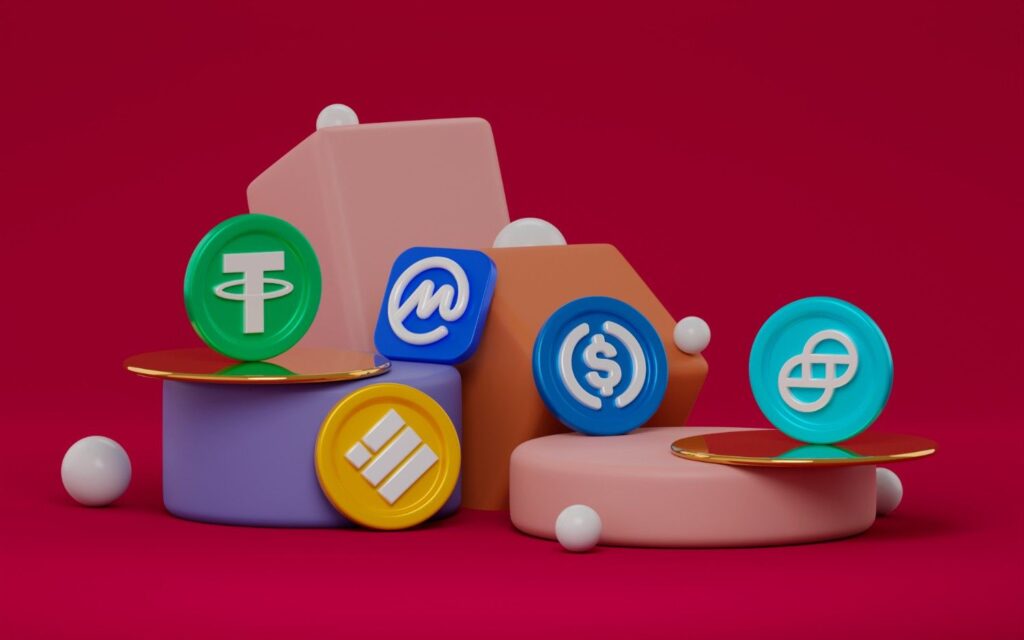Key Insight:
- Stablecoins keep a fixed value, which is usually pegged to fiat like the US dollar.
- They act as a bridge between traditional finance and digital assets.
- Traders, savers and DeFi users rely on stablecoins for security and liquidity.
Stablecoins are digital currencies designed to stay stable. While most cryptocurrencies rise and fall in value, stablecoins were designed to hold a steady price (usually one dollar).
They combine the strengths of blockchain with how reliable traditional money is.
When you hold one USD Coin or Tether, you’re holding a digital dollar. Each token represents one US dollar that exists in reserve somewhere.
How Stablecoins Maintain Their $1 Value?
The foundation of every major stablecoin is its peg, either 1 dollar, euro, etc. In order to maintain this, issuers hold reserves of cash or other liquid assets equal to the number of stablecoins in circulation.
For example, for every USDC in existence, there should be one dollar (or equivalent) held in reserve.

Types of stablecoins on the market | source: CoinMarketCap
Arbitrage keeps prices steady. If a stablecoin drops slightly below $1, traders buy it cheaply and redeem it for a full dollar. This demand pushes the price back up.
If the price rises above $1, new coins are issued and sold. This balances the price again.
Main Uses of Stablecoins
1. Trading: The Crypto Market’s Foundation
Stablecoins are important for trading. On most exchanges, they act as the base currency. Instead of trading Bitcoin for Ethereum directly, traders use pairs like BTC/USDT or ETH/USDC. This makes it easy to measure prices in dollars and move funds between assets without leaving the crypto space.
When the market turns volatile, traders often move their funds into stablecoins. This strategy lets them lock in profits or limit losses without needing to convert back to traditional money.
2. DeFi: Powering a New Kind of Finance
In the DeFi space, stablecoins are the main unit of account. They make lending, borrowing and liquidity pools possible because their value doesn’t fluctuate.
Users can lend stablecoins to earn interest or provide them as collateral for loans. While doing this, they also know that their worth will remain predictable.
DeFi platforms like Aave, Compound and Curve rely heavily on stablecoins to function well. Without them, DeFi would be far riskier and far less practical.
Stablecoins as a Modern Savings Tool
Stablecoins are not only for traders. They’re becoming a very popular savings option, especially in countries where local currencies lose value quickly.
People in inflation-hit economies use USD-pegged stablecoins to preserve their money. They also make international money transfers much cheaper and faster. Sending stablecoins across borders takes minutes and costs only a small network fee.
For migrant workers and families, that’s a big improvement over traditional transfers, which can be slow and expensive.
On top of that, some DeFi platforms offer interest on stablecoin deposits. Users can earn a steady yield without the price swings seen in other cryptos.
Why Stability Matters
Stablecoins solve the issue of volatility, which is one of crypto’s biggest problems. Bitcoin and Ethereum may be popular, but their price swings can make them unusable for everyday payments.
Stablecoins fill that gap and make blockchain useful in terms of real-world finance.
They act as the bridge between traditional finance and crypto. You can think of them as the digital version of a bank account balance because they are easy to send, easy to receive and always worth the same amount.
This stability allows businesses to price goods, pay salaries or settle transactions in crypto without worrying about sudden losses.
Challenges and Regulation
Stablecoins are reliable because users trust the honesty of their issuer. If the reserves are not properly managed, the entire peg could collapse.
That’s why regulators are paying attention. Governments and financial authorities want to make sure issuers follow the rules, hold real reserves and cover regular audits.
Projects like USDC have gained trust through transparency and clear reporting. Others, like Tether, have faced legal pressure to prove their reserves.
The Future of Stablecoins
Stablecoins have become an important part of digital finance. They bring reliability to a market that is known for its chaos. They also create the foundation for digital payments and decentralized banking.
As blockchain technology becomes more of a part of global finance, stablecoins are likely to play an even bigger role.
Many expect governments to issue their own versions, known as Central Bank Digital Currencies (CBDCs). These would combine the advantages of stablecoins with official backing.
Until then, private stablecoins are the closest thing to a truly digital dollar.












